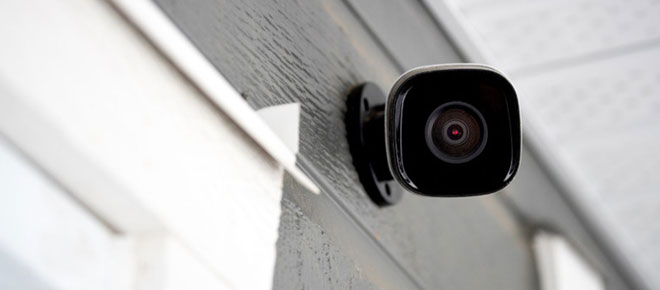The Advantages of a Wireless Wi-Fi Security Camera System

When it comes to home security systems, there are two main types of camera options: wired and wireless. Each has its advantages and disadvantages, making it important to weigh them before deciding on which type is best for your needs.
Wi-Fi is one of the most common types of wireless technology, and it can be used by many wireless security cameras. However, it has limitations and can only transmit video over short distances.
Easy to Set Up
A wireless WiFi security camera system is a great option for people who want to get their home security up and running quickly and easily. It also gives you a lot of flexibility, as you can place the cameras where they need to be and move them around whenever necessary.
However, setting up a wireless system can be a bit more complicated than installing a wired one. First, you need to decide where you’re going to mount the cameras. This will determine the type of connection that you need to use.
Wi-Fi: Most wireless security cameras work over a Wi-Fi network, which is great because it offers high speeds and is easy to set up. Some cameras also support cellular connections, which can provide additional reliability.
But if you need better connectivity, you can always purchase a WiFi extender to improve the signal strength in your area. You can even test the strength of your connection before you install any equipment by running a Wi-Fi app on your mobile device to see how strong your network is.
Bluetooth: This is another form of wireless communication, but it operates over shorter distances than Wi-Fi or cellular. It is not recommended for use in areas where there are other electronics or other obstructions like trees.
In addition, Bluetooth devices cannot send instructions or data over long distances. It is best for communicating with other devices in the same room or within a few feet of each other.
Cellular: While cellular communication is less common, it can be used by some wireless systems to back up a wireless connection. Many US households are moving away from landline connections and to cellular communication.
Because a wireless connection is often unreliable, it’s important to have a backup plan. This is especially true when a wireless connection is being used outdoors.
You can use a WiFi extender to cover large areas of your property. You can also place a wireless hub in an outbuilding or garage for extra coverage.
If you haven’t installed a wired system before, it’s best to hire someone with experience to do the job for you. This will ensure that the job is done correctly and won’t cause problems down the road.
No Wires
A wireless WiFi security camera system doesn't require wires running from the cameras to a central hub. This means that setup is fast and easy, and the entire system can be moved around your home without a hitch. This is especially useful for people who are renting their homes, or who want to move their system into a new place after they've purchased it.
The majority of modern security cameras are designed to connect to your WiFi network and be connected to the Internet. This is a convenient feature that allows you to get notifications when a camera detects motion, check in on live footage, and even turn your cameras off and on remotely. However, some people don't have WiFi or a strong enough connection, which is why there are also non-WiFi options available.
Zosi Coupon Codes offers affordable Wi-Fi Security Cameras that can be purchased using discount codes to save even more money. These cameras provide peace of mind and security for your home or office without breaking the bank.
Another popular option for those who don't have Wi-Fi is cellular connectivity. These cameras connect to a phone or other device using cellular technology, which is more secure than Wi-Fi and less susceptible to hacking attacks.
Unlike wired security systems, cellular cameras don't need to be hardwired to power, and you can even set up them for use on battery. They're also easier to install and reposition than wireless cameras, making them a great choice for elderly or disabled individuals.
In addition, a lot of cellular security cameras offer remote access through the phone, so you can watch footage from any location. This makes them a great choice for parents or caregivers who need to be able to check in on their children from afar.
Once you've figured out where you need the camera, you can start installing it. For most wired systems, you'll need to run the cable from the camera to a digital video recorder (DVR), or network video recorder (NVR).
This is typically done using a coax cable. This can be tricky if you're installing the cameras in a tight spot, such as in a basement or garage, so it's important to follow a guide.
Most systems come with a DVR or NVR, so you'll need to choose which one is right for your needs. Regardless of what type of recording device you decide on, make sure that it has enough storage space to record all of your footage. If not, consider buying a memory card to keep your footage safe.
No Power Source
When you hear a security camera system is advertised as 'wireless', that does not mean it doesn't require a power source. This is because all wireless devices still need to connect to an electrical outlet to be able to work.
This means that your WiFi security camera system may have to be run with cables unless you opt for battery-powered cameras. This can be a frustrating task when you are trying to set up your system, but it is important to understand the different types of security cameras and how they get their power.
Wired security systems are more stable and secure because they rely on a direct connection to the recording hub. However, their inability to transmit signals over the internet can make them susceptible to interruptions and poor-quality video feeds.
A wired system can be difficult to set up, especially if you're installing multiple cameras in a large area. Be sure to consider the length of wire needed and any obstacles that may need to be tucked away or covered by wiring.
Also, consider the placement of the wired camera so that it is close enough to a reliable power source that it will be able to receive a quality signal. This will help prevent problems with video feed disruptions and distorted images.
There are many budget security cameras available online that you can purchase using Electronics Promo Codes to get a discount. Some popular options include Wyze Cam, YI 1080p Home Camera, and Zmodo Wireless Security Camera. You can search for these cameras on electronics retailers' websites and apply any available promo codes during the checkout process.
Battery-powered security cameras are also a great option, but you will have to monitor their batteries and replace them when they die. Most of these cameras are configured to send a notification to your mobile device when their battery is low.
If you prefer a more organized approach to your installation, you can try using a power supply box or PoE (Power over Ethernet) cords. This method can save you time and money on your project by allowing all of the cable wires to be in one place instead of spread around.
Easy to Move
Wireless security cameras are a great way to save on installation and maintenance costs. But they also have some challenges when it comes to connectivity, signal strength, and power needs.
Range and coverage: Within the home, wireless systems usually have a range of about 150 feet. However, if the camera is located on a porch or other space with a clear line of sight to the router, the signal can reach up to hundreds of feet away.
But it’s important to note that the range and coverage of a wireless system can diminish with building materials like brick or concrete walls between the camera and the router. The strength of the signal will also decline as other wireless devices nearby will compete for the same spot in the range.
For this reason, it’s a good idea to choose a camera that has good range and coverage. You should also look for a model that uses WiFi Protected Setup (WPS), which is an easy way to reconnect the device to your network without having to enter a password.
Depending on the brand, cameras can have an Ethernet port or can be powered over an Ethernet (PoE). This means that you can connect your camera to your router using a single cable for both video and power transmission.
Wired installations have some advantages over wireless, especially for larger businesses or institutions that need more reliable connections. They are more stable and have better connection speeds than WiFi networks, but they can be less flexible when it comes to placement and relocation.
If you’re a business owner, the ease of moving your wired security camera system to new locations can be critical. You might need to deploy a new camera in a different location as a part of an expansion or renovation, or even to a new location in your parking lot to protect against vandalism.
If you’re looking for a camera that can move around with you, look for a model that can run off battery power instead of relying on an AC outlet. This will help make the whole process easier and quicker, and it will also reduce the chance of your network getting compromised in case of a power outage or other issue that requires you to relocate your camera.
Conclusion
A wireless WiFi security camera system is a great option for people who want to get their home security up and running quickly and easily. A wireless WiFi security camera system doesn't require wires running from the cameras to a central hub. This means that your WiFi security camera system may have to be run with cables unless you opt for battery-powered cameras.





.jpeg)


